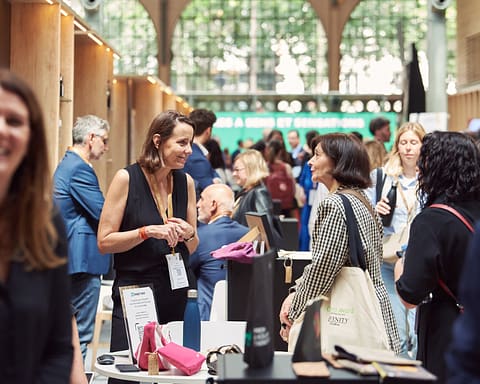[vc_row njt-role=”people-in-the-roles” njt-role-user-roles=”administrator,editor,author,armember”][vc_column][vc_column_text]
According to Bernstein’s Luxury Retail Evolution study, retail sales are evolving rapidly, and differently. On the one hand, there’s the rise of the luxury giants, who have a large share of the monopoly on the best spaces and locations, and on the other, the smaller players, who have to make do with what’s left.
“In the four years since the Covid-19 crisis, the global luxury store network has changed very little, increasing by just 0.5%, particularly in Asia-Pacific, Europe and the Middle East. Excluding Michael Kors , which closed 132 stores over the period, mainly in the United States, the North American market also proved attractive, with new destinations such as St. Louis, Detroit and Austin, previously shunned by the houses,” says Luca Solca, author of the study and senior luxury analyst at Bernstein.
All in all, luxury retail is essentially present in just 25 cities, including Paris, New York, London, Seoul, Hong Kong, Tokyo and Osaka. However, major investments “have been concentrated in the French capital”, says the analyst. He cites as an example the Dior store at 30 avenue Montaigne, which was completely renovated and enlarged last year. In addition to the boutique, its 10,000 square meters also house a café, a restaurant, gardens, a museum and a suite reserved for the wealthiest customers.

Opening a store on this scale is not just about selling, but also about retaining customers for as long as possible. A flagship store like Dior’s is as much about the visitor spending 30 euros or so on a snack, as it is about the most loyal customer indulging in a shopping spree.
“It’s no longer just a question of using the most precious materials, such as marble and others, to impress visitors, but of transforming the boutique into a unique and meaningful place, linked to the brand’s roots. The idea is to make this space memorable and unrepeatable, with distinctive and Instagrammable elements, to make it a destination in its own right,” explains Luca Solca.
These new points of sale require substantial investment. But for the major brands, these costs are minimal, and are proving highly profitable, with sales of several hundred million euros. Bernstein’s study shows that these stores go far beyond their original role, becoming veritable attractions, almost comparable to monuments.
This new role has been enhanced tenfold by the multiplication of parallel initiatives, such as collaborations, pop-ups, events, catering, VIP lounges and more. All of which have helped the luxury industry boost its sales per square metre.
“These initiatives, which translated into competitive advantages, were gradually copied by everyone, but their accumulation and continuous increase on the part of the big houses ended up creating an insurmountable barrier for smaller brands”, notes the analyst, for whom “the scale factor became a fundamental asset“.
He continues: “An average company with sales of a few hundred million euros, or even 1 or 2 billion euros, will never be able to compete with a company that injects 500 million euros into a single boutique, as LVMH did for the Tiffany flagship in New York“.
The race for large-scale development continues, as evidenced by the establishment of brands in new Chinese shopping malls such as Plaza 66 or the IFC Mall in Shanghai.
But for medium-sized luxury companies with fewer resources, there are other solutions, calling on creativity without seeking to copy the big brands: “You need pragmatism to find less expensive locations, and a certain dose of humility and realism to use originality and inventiveness to differentiate yourself“, concludes the analyst.
Read also >DFF and Richemont join forces to develop luxury retailing
Featured photo : © Kristen Pelou[/vc_column_text][/vc_column][/vc_row][vc_row njt-role=”not-logged-in”][vc_column][vc_column_text]
According to Bernstein’s Luxury Retail Evolution study, retail sales are evolving rapidly, and differently. On the one hand, there’s the rise of the luxury giants, who have a large share of the monopoly on the best spaces and locations, and on the other, the smaller players, who have to make do with what’s left.
“In the four years since the Covid-19 crisis, the global luxury store network has changed very little, increasing by just 0.5%, particularly in Asia-Pacific, Europe and the Middle East. Excluding Michael Kors , which closed 132 stores over the period, mainly in the United States, the North American market also proved attractive, with new destinations such as St. Louis, Detroit and Austin, previously shunned by the houses,” says Luca Solca, author of the study and senior luxury analyst at Bernstein.
All in all, luxury retail is essentially present in just 25 cities, including Paris, New York, London, Seoul, Hong Kong, Tokyo and Osaka. However, major investments “have been concentrated in the French capital”, says the analyst. He cites as an example the Dior store at 30 avenue Montaigne, which was completely renovated and enlarged last year. In addition to the boutique, its 10,000 square meters also house a café, a restaurant, gardens, a museum and a suite reserved for the wealthiest customers.

Opening a store on this scale is not just about selling, but also about retaining customers for as long as possible. A flagship store like Dior’s is as much about the visitor spending 30 euros or so on a snack, as it is about the most loyal customer indulging in a shopping spree.
“It’s no longer just a question of using the most precious materials, such as marble and others, to impress visitors, but of transforming the boutique into a unique and meaningful place, linked to the brand’s roots. The idea is to make this space memorable and unrepeatable, with distinctive and Instagrammable elements, to make it a destination in its own right,” explains Luca Solca.
These new points of sale require substantial investment. But for the major brands, these costs are minimal, and are proving highly profitable, with sales of several hundred million euros. Bernstein’s study shows that these stores go far beyond their original role, becoming veritable attractions, almost comparable to monuments.
[…][/vc_column_text][vc_cta h2=”This article is reserved for subscribers.” h2_font_container=”tag:h2|font_size:16|text_align:left” h2_use_theme_fonts=”yes” h4=”Subscribe now !” h4_font_container=”tag:h2|font_size:32|text_align:left|line_height:bas” h4_use_theme_fonts=”yes” txt_align=”center” color=”black” add_button=”right” btn_title=”I SUBSCRIBE !” btn_color=”danger” btn_size=”lg” btn_align=”center” use_custom_fonts_h2=”true” use_custom_fonts_h4=”true” btn_button_block=”true” btn_custom_onclick=”true” btn_link=”url:https%3A%2F%2Fluxus-plus.com%2Fen%2Fsubscriptions-and-newsletter-special-offer-valid-until-september-30-2020-2-2%2F”]Get unlimited access to all articles and live a new reading experience, preview contents, exclusive newsletters…
Already have an account ? Please log in.
[/vc_cta][vc_column_text]Featured photo : © Kristen Pelou[/vc_column_text][/vc_column][/vc_row][vc_row njt-role=”people-in-the-roles” njt-role-user-roles=”subscriber,customer”][vc_column][vc_column_text]
According to Bernstein’s Luxury Retail Evolution study, retail sales are evolving rapidly, and differently. On the one hand, there’s the rise of the luxury giants, who have a large share of the monopoly on the best spaces and locations, and on the other, the smaller players, who have to make do with what’s left.
“In the four years since the Covid-19 crisis, the global luxury store network has changed very little, increasing by just 0.5%, particularly in Asia-Pacific, Europe and the Middle East. Excluding Michael Kors , which closed 132 stores over the period, mainly in the United States, the North American market also proved attractive, with new destinations such as St. Louis, Detroit and Austin, previously shunned by the houses,” says Luca Solca, author of the study and senior luxury analyst at Bernstein.
All in all, luxury retail is essentially present in just 25 cities, including Paris, New York, London, Seoul, Hong Kong, Tokyo and Osaka. However, major investments “have been concentrated in the French capital”, says the analyst. He cites as an example the Dior store at 30 avenue Montaigne, which was completely renovated and enlarged last year. In addition to the boutique, its 10,000 square meters also house a café, a restaurant, gardens, a museum and a suite reserved for the wealthiest customers.

Opening a store on this scale is not just about selling, but also about retaining customers for as long as possible. A flagship store like Dior’s is as much about the visitor spending 30 euros or so on a snack, as it is about the most loyal customer indulging in a shopping spree.
“It’s no longer just a question of using the most precious materials, such as marble and others, to impress visitors, but of transforming the boutique into a unique and meaningful place, linked to the brand’s roots. The idea is to make this space memorable and unrepeatable, with distinctive and Instagrammable elements, to make it a destination in its own right,” explains Luca Solca.
These new points of sale require substantial investment. But for the major brands, these costs are minimal, and are proving highly profitable, with sales of several hundred million euros. Bernstein’s study shows that these stores go far beyond their original role, becoming veritable attractions, almost comparable to monuments.
[…][/vc_column_text][vc_cta h2=”This article is reserved for subscribers.” h2_font_container=”tag:h2|font_size:16|text_align:left” h2_use_theme_fonts=”yes” h4=”Subscribe now !” h4_font_container=”tag:h2|font_size:32|text_align:left|line_height:bas” h4_use_theme_fonts=”yes” txt_align=”center” color=”black” add_button=”right” btn_title=”I SUBSCRIBE !” btn_color=”danger” btn_size=”lg” btn_align=”center” use_custom_fonts_h2=”true” use_custom_fonts_h4=”true” btn_button_block=”true” btn_custom_onclick=”true” btn_link=”url:https%3A%2F%2Fluxus-plus.com%2Fen%2Fsubscriptions-and-newsletter-special-offer-valid-until-september-30-2020-2-2%2F”]Get unlimited access to all articles and live a new reading experience, preview contents, exclusive newsletters…
Already have an account ? Please log in.
[/vc_cta][vc_column_text]Featured photo : © Kristen Pelou[/vc_column_text][/vc_column][/vc_row]




































